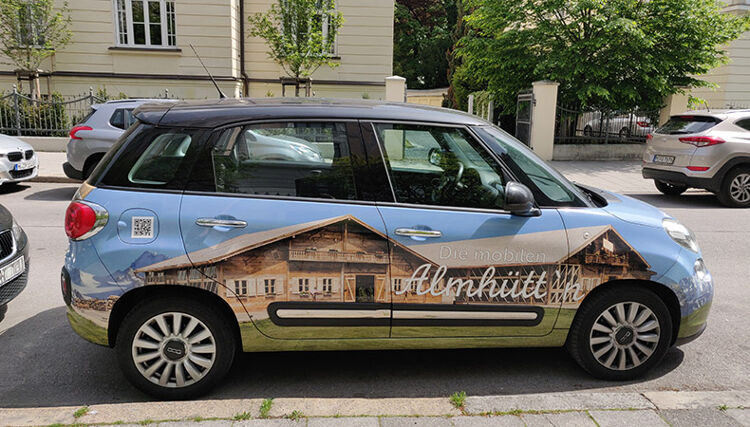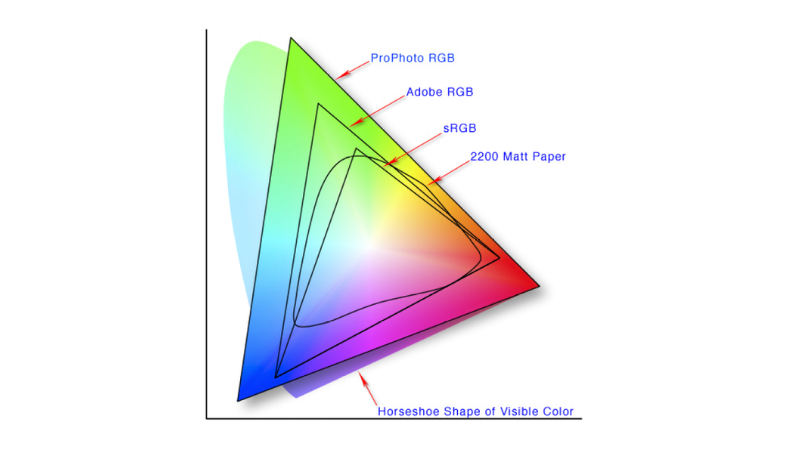How sustainable is vehicle wrapping?

Vehicle wrapping is a great business opportunity for many printers, as it is popular with customers. Sonja Angerer discusses Climate Change and the global shortage of resources in relation to the sustainability of car wrapping. Sonja also shares the advantages and disadvantages of wrapping and how this relates to the environment and how you can avoid wasting resources.
Taxis as well as many company and private vehicles are no longer repainted but are instead wrapped. This has many advantages for the owner. Compared to a professional paint job, vehicle wrapping offers significant advantages. This starts with the design options. Flip-flop, chrome, carbon or textured surfaces are difficult to achieve with automotive paint while quite easy accomplished using special foils.
When a new car buyer chooses a standard colour like white, this is often cheaper than metallic paint right from the factory. In addition, vehicles with a neutral colour usually achieve higher resale prices.
For professional repainting, the vehicle must be torn down quite a bit. Therefore, a complete repainting job can take 1 week or more. A full vehicle wrapping, on the other hand, usually takes no more than 2 days, and is often completed within 1 working day, with the car available for use much faster. Films also protects the original paint from UV damage and scratches as it offers an additional layer.
Vehicle wrapping is also much easier to remove. Professionals rarely need more than 1 working day to unwrap a car. The original paint is not damaged, and there is no further layer of varnish is built up. Car users, whether private or business, can therefore give their vehicle a new look anytime they like.
As a general rule, for a full car wrap twice the width and three times the length of a vehicle is required in linear meters of foil. This applies to coloured films. If the design is printed digitally, it may require significantly more printing substrate, as the motif must be placed on the roll with overlaps. Depending on the size of the car, this adds up to a total of between 17 and 25 square metres for a full wrap, which does raise some questions about sustainability.
 CAPTION: Wrapping saves on some paintwork, even with boats, which means less resources are used. Image Credit: S. Angerer
CAPTION: Wrapping saves on some paintwork, even with boats, which means less resources are used. Image Credit: S. Angerer
Criteria for resource utilisation
When determining whether vehicle wrapping is a waste of resources, it is worth looking at several factors. What are the alternatives? For vehicles, the only other option is full or partial painting or an airbrushed motif. For a single car about 6 to 8 litres of paint is required for base and clear coat. Experts estimate the CO2 footprint of a litre of car paint is anywhere between 5 - 10 kilograms. For films for vehicle wrapping, between 2 - 6 kilograms per square meter foil are commonly used. According to these estimates, paint jobs and a full vehicle wrapping are almost equal in terms of CO2 emissions.
It should be noted that these estimates are quite vague, as to calculate an accurate CO2 footprint of any product or service, you must take a closer look at:
- · Raw materials
- · Production
- · Transport
- · Application
- · Recycling
There is an enormous range for each individual factor: Is film made of recovered raw materials? Is the paint produced in a factory using renewable energy? Does the product have to be imported from another continent or is it available locally? Is it possible to recycle waste and leftovers, or does everything end up in landfill?
For a smaller company such as a paint shop or car wrapper, doing these elaborate calculations are usually not feasible. Agencies such as ClimatePartner offer to calculate CO2 footprints of products and services and entire companies. However, currently manufacturers of films and coatings do not usually publish the amount of CO2 generated by the individual product.
In addition to the CO2 footprint, sustainability can also be a criteria for assessing how environmentally friendly or harmful vehicle wrapping really is. The most widely used model for sustainability states the three pillars ecology, economy and social sustainability. The latter means promoting prosperity and justice for all, i.e. aspects such as education, health, legal security and fair employment. The three pillars are interlinked and mutually dependent. Local companies score particularly well, as they create jobs that can help to stabilise communities.
 CAPTION: Is vehicle wrapping a waste of resources or a great advertising opportunity? Image Credit: S. Angerer
CAPTION: Is vehicle wrapping a waste of resources or a great advertising opportunity? Image Credit: S. Angerer
Is vehicle wrapping good for the environment?
Like all economic activities, vehicle wrapping requires raw materials and energy. The best way to decide whether this is a waste of resources is to compare the advantages and disadvantages of technologies.
Advantages of vehicle wrapping:
1. Energy consumption: Vehicle wrapping requires less energy than a paint job, as no time-consuming drying is required.
2. Easy to undo: Films can be removed or replaced without damaging the underlying paint. This allows for a better use of its advertising effect.
3. Durability and protection: High-quality films protect the underlying paint against UV, dirt and scratches, so only one paint job is required within the vehicle’s product life circle.
4. Reduce waste: Wrapping can extend the life of the vehicle so that less waste is generated.
Disadvantages of using vehicle films
1. Limited shelf life: High-quality automotive films have an average lifespan of about 5 - 7 years. A vehicle may be wrapped several times during its life cycle. Automotive coatings are designed for a durability of 15 years and more.
2. Damage: Films can be damaged much faster than paint by scratches, cleaning agents, UV radiation and weather, so a vehicle may need to be re-wrapped, creating lots of waste.
3. Damage through residue: When removing the film, residues may remain, or the paint may be damaged. In such cases, the vehicle might still need a new paint job in addition to the wrap.
 CAPTION: With high quality films and professional mounting, vehicle wrapping is a sustainable alternative. Image Credit: S. Angerer
CAPTION: With high quality films and professional mounting, vehicle wrapping is a sustainable alternative. Image Credit: S. Angerer
How to vehicle wrap without wasting resources
Suppliers of vehicle wrappings can do a lot to ensure that their work is as resource efficient as possible. This starts with the use of sustainable films. There are already some PVC-free films available specifically for vehicles, such as PU50C from Grafityp. Other manufacturers, e.g. Aslan, try and use a high proportion of recyclates in their films to save on new raw materials. Orafol has implemented an ISO 14001-certified environmental management system at its headquarters in Oranienburg. Avery Dennison has set out for ambitious environmental targets for 2030.
Another element for resource-saving car wrapping is logistics. The shorter the distances travelled by suppliers, customers and employees; the less CO2 is emitted. So, local networks can make a real difference.
But customers may also do their share to avoid wasting resources through vehicle wrapping. After all, treating vehicle and wrap carefully will prevent the wrapping from having to be replaced earlier than expected. Companies that offer also professional de-wrapping can help to make sure that film no longer in use is recycled as intended.
It therefore is entirely possible to do vehicle wraps that harm environment only as much as completely necessary. The process cannot therefore be described as a waste of resources, rather it is the opposite, an excellent and environmentally friendly alternative to vehicle painting.
To discover the latest content that covers a wide range of sectors including vehicle wrapping up for FESPA’s free monthly newsletter FESPA World available in English, Spanish and German.
Discover the next World Wrap Masters competition here. The World Wrap Masters series is the only global series of wrapping competitions that connects and celebrates the best wrap installers in the world, with competitions occurring in every major continent and the winners of regional and national events qualifying and competing at the World Wrap Masters Final for the title of the global World Wrap Master.
Topics
Interested in joining our community?
Enquire today about joining your local FESPA Association or FESPA Direct
Recent news
.png?width=550)
FESPA Middle East 2025 - Day 1 Highlights
The video shows you all the live action from day 1 of the expo including the kick-off of the World Wrap Masters competition, the free sessions in the conference, and the buzz of networking and doing business on the show floor.

Creative Collaboration with AI - How to develop Decorated Apparel design themes part 2
In this second article, Mark Coudray shares how to leverage AI programs to create interesting, commercial brand graphics for advertising, signage, apparel, and promotional products, with a key focus on decorated apparel.

How to perfect personalisation in printed packaging
Packaging is one market that has been cited as a growth area for some time now, but if you combine this up with another sector of opportunity in terms of personalisation, this can open even more doors for printers. Here, Rob Fletcher takes a closer look at packaging personalisation.
.png?width=550)